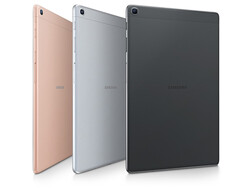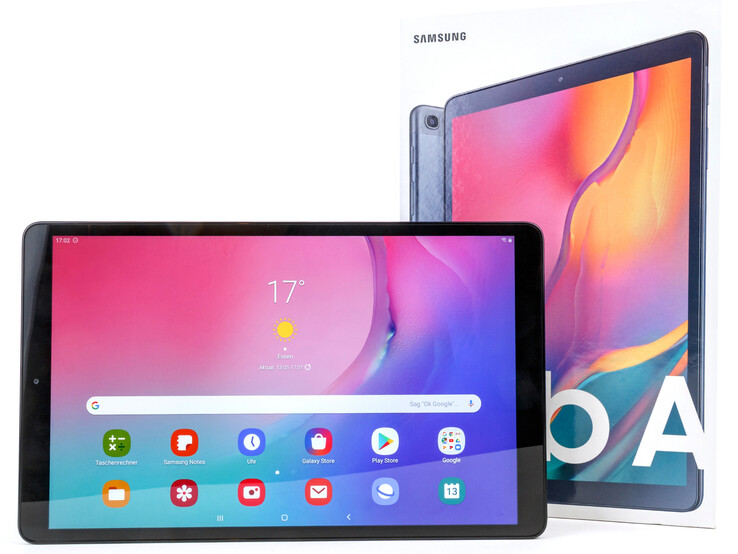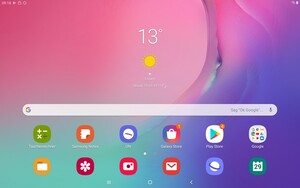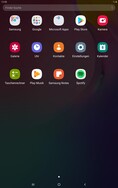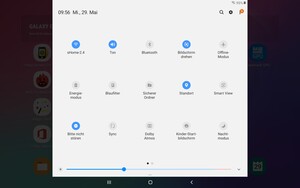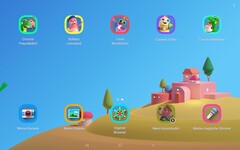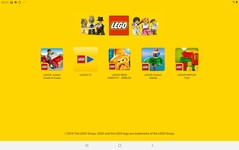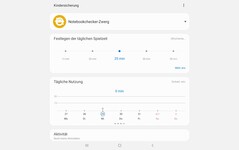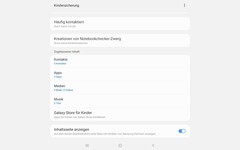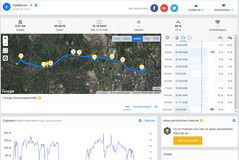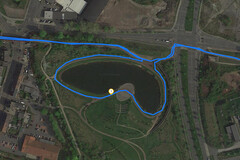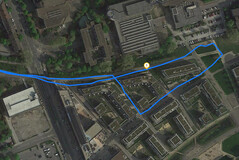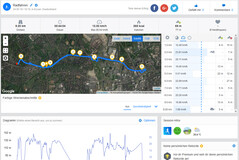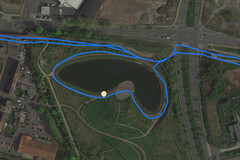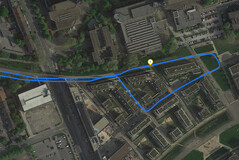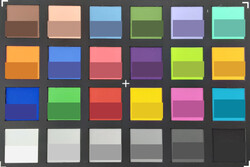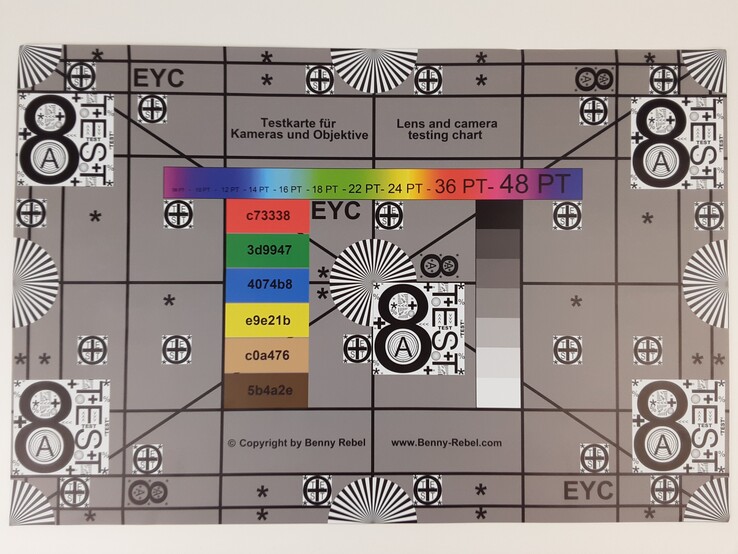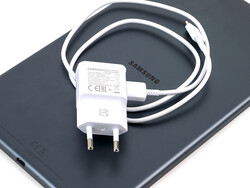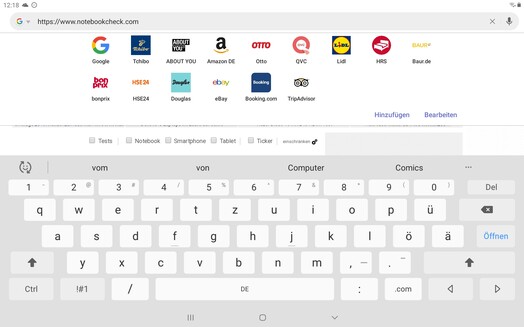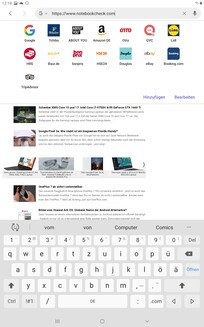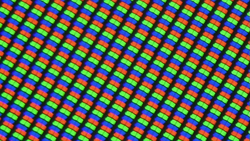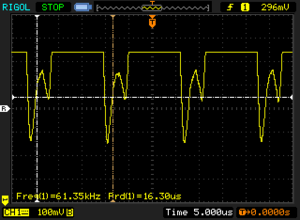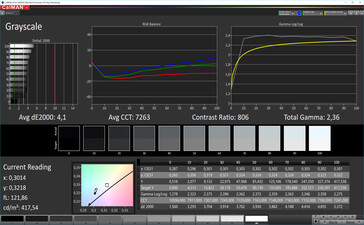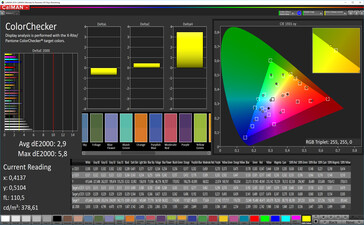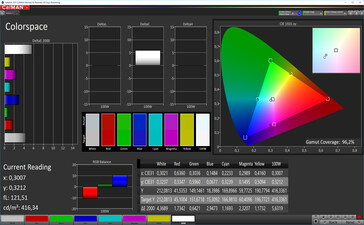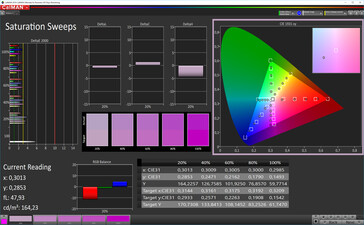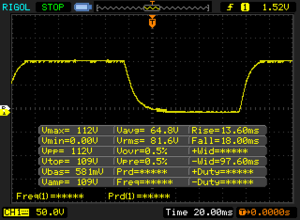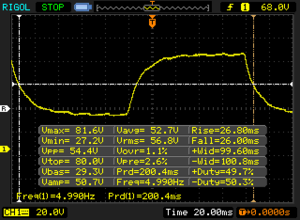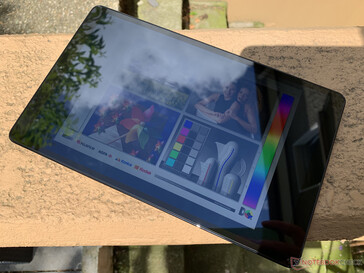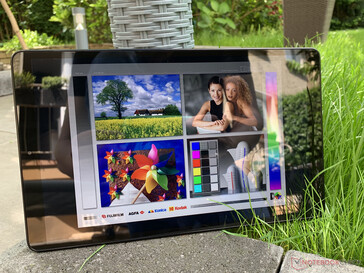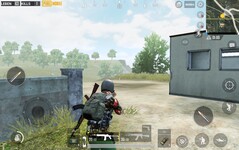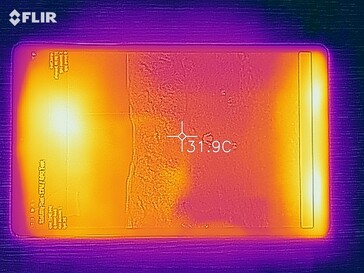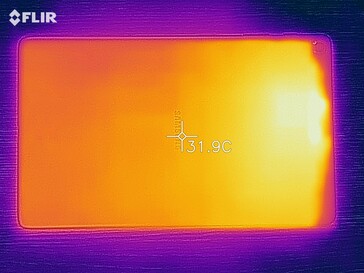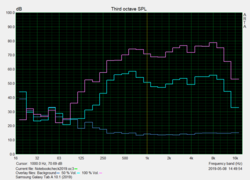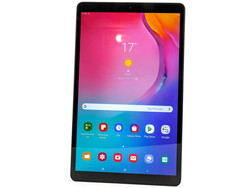Samsung Galaxy Tab A 10.1 (2019) Tablet Review
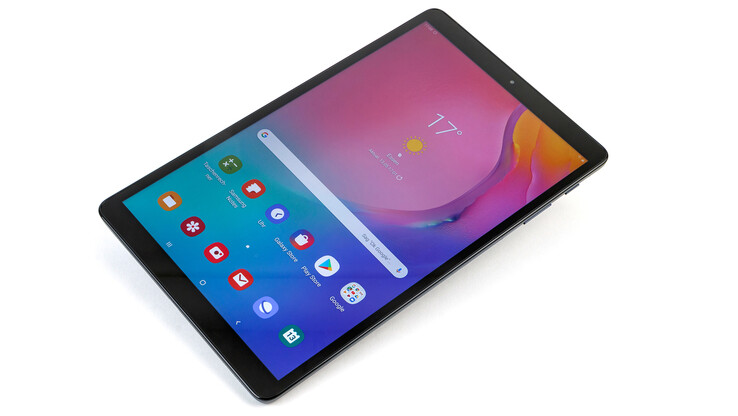
The Tab A 10.1, specifically the SM-T510, succeeds the Tab A 10.1 (2016). The two tablets have the same screen size, but Samsung has changed a lot in three years. The new Tab A 10.1 sports a redesigned chassis and includes slimmer display bezels. The South Korean company has dispensed with the home button too and has included a newer SoC that it promises should provide better performance and improved efficiencies. The company has also doubled the internal storage from 16 GB to 32 GB, although this remains eMMC rather than the faster UFS 2.1 that we have seen in some premium smartphones and tablets. There is still 2 GB of RAM, but this has been upgraded to LPDDR4. USB Type-C replaces micro-USB too, but there is still a headphone jack, which is fast becoming a relic.
In short, the Tab A 10.1 offers only minor upgrades over its three-year-old predecessor, but it is in keeping with a tablet that retails for 219 Euros (~$244). Samsung also sells an LTE variant, which costs an additional 50 Euros (~$56). By comparison, the Wi-Fi version of the Tab A 10.1 (2016) launched at 349 Euros (~$389); it is now much cheaper though.
We have chosen to compare the Tab A 10.1 against its predecessor along with other budget and midrange tablets. These will include the Amazon Fire HD 10, Apple iPad 6 2018, Huawei MediaPad M5 Lite and the Lenovo Tab M10. We shall also consider our review unit against the Galaxy Tab A 10.5 and the Galaxy Tab S5e.
Case
Samsung currently sells the Tab A 10.1 in three colours: black, gold, and silver. Our review sample is the black model for reference. The tablet is pleasantly thin at 7.5 mm, although the pricier Galaxy Tab S5e is thinner still at 5.5 mm. The rear-facing camera protrudes by about 1 mm, so technically the Tab A 10.1 is 8.5 mm thick. However, this does not cause the tablet to rock about on a flat surface, so we did not notice this extra depth in daily use. The Tab A 10.1 weighs just 460 g, making it lighter than all our comparison devices.
We also like the build quality of our review unit and Samsung’s choice of materials. The back is mostly made from an unspecified metal, with a top strip being made from plastic, which houses the camera and antennae. Samsung has covered the display in Corning Gorilla Glass 3 and has added a plastic lip for added scratch protection. Overall, most of the gaps between materials are evenly tight. Some gaps between the display frame and metal chassis do not look as true as other areas; we hardly noticed this in daily use though.
The Tab A 10.1 is surprisingly sturdy too. We can only get the display to temporarily deform if we press hard, and we cannot bend or twist the tablet easily either. The tablet has a rather wide plastic card slot, but this does not reduce its overall rigidity. The slot in our review unit only houses a microSD card, but the LTE version also takes a nano-SIM card. Please keep in mind that the tablet has no IP or MIL-STD certification. Hence, it is not dust or water-resistant.
Connectivity
The Tab A 10.1 has 32 GB of eMMC flash storage, but this can be expanded with a microSD card if you need more space. Our review unit supports all modern file systems, but it cannot store apps or data on expandable storage by default. You can enable this feature in Developer Options, which you must also unhide by pressing the build number within Settings several times. We were never able to format our reference microSD cards as internal storage though.
The tablet also has a USB 2.0 Type-C port, to which you can connect peripherals like a keyboard and mouse thanks to USB On-The-Go (OTG) support. The Type-C port can also be used to output audio, although there is a 3.5 mm headphone jack for that purpose too.
The Tab A 10.1 also has Bluetooth 5.0. It does not have an NFC chip though, so you cannot use it with services like Google Pay.
Software
The Tab A 10.1 ships with One UI 1.0, which is Samsung’s customised version of Android 9.0 Pie. Our review unit had March 1, 2019 security patches installed at the time of testing, which were about two months old by that point. We expect Samsung to issue security patches every three to six months, but not at regular intervals. The company should also roll out a system update based on Android 10.0 Q too at some point.
One selling point of the Tab A 10.1 is Kids Home, which allows parents to limit what apps their children can see and access. The mode can be activated quickly and easily via the quick-start menu. Parents can protect Kids Home with a PIN to prevent children from accessing the regular launcher and selection of apps. You can also set up multiple profiles and manage them separately. You must input the parent PIN when switching between child profiles though. Likewise, only parents can install apps and games.
Kids Home also has a redesigned Settings menu that displays screen-on times. You can set limits for weekdays and weekends and see how long your children have been spending on each app you have installed. Samsung has redesigned the camera app to make it easier to use too. The app has an easy-to-use 3.9x digital zoom, while Samsung allows you to view photos taken in Kids Home in both the usual gallery and the Kids Home gallery, giving parents a greater oversight of what their children are photographing.
In short, we think that Kids Home is aimed at children under the age of 10. We would recommend using a combination of Digital Wellbeing and Google Family Link for older children though. You can also set up multiple user accounts outside of Kids Home.
Our review unit has plenty of Google and Samsung apps installed along with Spotify and some Microsoft apps. We were able to uninstall Spotify but only disable the Microsoft apps. It is rather cheap of Samsung to preinstall so many apps but only include 32 GB of storage, especially considering that the company has designed the Tab A 10.1 with the intention of multiple people using it.
Communication & GPS
The Tab A 10.1 supports Wi-Fi 5 connectivity and has a SAR body rating of 0.555 W/kg. By contrast, the LTE variant has a higher rating of 1.36 W/kg and utilises LTE Cat. 6 for up to 300 Mb/s download speeds along with 50 Mb/s upload speeds. The LTE model also supports eight LTE bands and can connect to 2G or 3G networks should you need to do so.
Our review unit achieved respectable Wi-Fi transfer speeds in our iperf3 Client tests with our Linksys EA8500 reference router. The Tab A 10.1 averaged around 295 Mb/s across both tests, which puts it ahead of all but the iPad 6 2018 of our comparison devices overall.
We should point out that we occasionally noticed some signal drop-outs during our tests. This should not cause any issues in daily use, but we would recommend not straying too far from a router if possible, as you may experience connection issues if you do.
The Tab A 10.1 uses BeiDou, GLONASS and GPS for location services, which allow our test device to achieve a satellite fix with up to six metres accuracy outside and eight metres accuracy inside. The tablet takes a while to find a sat fix indoors though.
We also took our review unit on a short bike ride to test its location accuracy against our Garmin Edge 500 bike computer. The two devices plotted an almost identical route and deviated by just 10 metres over a 9.21 km route. The Tab A 10.1 occasionally plotted a more accurate route than the Garmin too, although the latter mapped a truer route around the lake, for instance. Overall, the Tab A 10.1 is accurate enough for all general navigation tasks and even more complex ones.
Cameras
The Tab A 10.1 has a 5 MP front-facing camera, which can take decent photos in good lighting conditions. Its narrow f/2.2 aperture and comparatively small sensor mean that it struggles in low-light conditions though. The sensor can also record videos in up to 1080p, but you will need a steady hand as there is no image stabilisation.
The tablet has an 8 MP rear-facing camera too. The sensor is slightly larger than the front-facing one and has an f/1.9 aperture. Correspondingly, it should take better shots in low light, but we would still recommend using it in good lighting conditions, as demonstrated by the noisy low-light results in scene 3. Overall, pictures photographed with the rear-facing sensor are pleasing, and dynamics are surprisingly good. Most shots have blurry details on close inspection, but there are no such issues when taking macro photos. It is a shame that Samsung decided against including an LED flash though, as it would have prevented low-light photos from always looking like a blurry and underexposed mess.
The rear-facing camera can also record videos in up to 1080p and has no form of image stabilisation. Overall, videos look about as good as photos.
We also subjected our review unit to further camera tests under controlled lighting conditions. The rear-facing camera reproduces most colours too brightly compared to ColorChecker Passport reference colours, but black looks almost perfect.
The sensor does a decent job at capturing our test chart, although there are deficiencies. The middle of the chart does not look as sharp as it should, and the details are a bit muddy. Moreover, contrast levels drop off sharply in the lower corners of the image. Overall, the photo looks acceptable considering that it has been taken with a budget tablet. Less said about our attempts to photograph our test chart at 1 lux though; the resulting photo is woeful.
Accessories & Warranty
Samsung includes a modular charger (5 V/ 1.55 A), USB Type-A to Type-C cable, a quick-start guide along with the usual selection of warranty and safety leaflets. It is worth pointing out that our review unit came with an 80 cm USB cable, which is disappointingly short. On the plus side, the box contained no plastic save for the wrapper in which the box was encased.
Samsung only currently sells a Book Cover as an optional accessory for the Tab A 10.1, which retails for around 60 Euros (~$67). The company sells endless generic accessories too.
The tablet also comes with 24 months warranty. Samsung does not sell any Care+ services for the Tab A 10.1 though. Please see our Guarantees, Return Policies & Warranties FAQ for country-specific information.
Input Devices & Operation
The Tab A 10.1 has a 10-point multitouch touchscreen, which worked perfectly during our tests. The Gorilla Glass 3 has a smooth finish that is conducive to perform multi-finger gestures like pinch to zoom. It is a fingerprint magnet though.
Samsung preinstalls its in-house keyboard as the default. The keyboard worked just as well as it does on other Samsung devices running One UI that we have already tested, like the Galaxy Tab S5e or the Galaxy S10. You can install other keyboard apps if you wish, like those downloadable from the Galaxy or Google Play stores.
The physical buttons on our review unit have some play to them and can easily be moved back and forth within their housings. Their pressure points should be a bit crisper in our opinion, but we had no major issues with the keys in daily use.
The Tab A 10.1 does not have any special biometric security features like facial or fingerprint authentication. You can secure the device with a password, pattern or PIN though.
Display
The Tab A 10.1 has a 10.1-inch LCD panel that operates natively at 1920x1200 in a 16:10 aspect ratio. Anyone expecting an identical display to the one that Samsung used in its predecessor will be disappointed. Our review unit achieved an average maximum brightness of 396 cd/m², which falls short of all but the Lenovo Tab M10 of our comparison devices. Moreover, the Tab A 10.1 (2016) gets 31% brighter than its successor and is 6% more evenly lit too. The more practical APL 50 test records an average maximum brightness of 414 cd/m² for the new Tab A 10.1, but it is still underwhelmingly low, nonetheless.
Our review unit has a lower black value than its predecessor, which we measure at 0.5 cd/m². This helps the Tab A 10.1 achieve an 802:1 contrast ratio, which is slightly higher than what the Tab A 10.1 (2016) managed in the same tests. However, both are comparatively mediocre, with our review unit being well beaten by many of our other comparison devices.
Likewise, it is a shame that Samsung failed to include a reader, or eye-protection mode as the display can dim to 2.16 cd/m², making it ideal for reading at night or as an eBook replacement. Unfortunately, the night mode incorporated in One UI only replaces light areas with dark ones and does not reduce the blue light that the display emits.
Fortunately, the tablet does not use pulse-width modulation (PWM) to regulate its display brightness. However, the display does flicker at 60 Hz according to our oscilloscope, so this may still cause issues for some people.
| |||||||||||||||||||||||||
Brightness Distribution: 86 %
Center on Battery: 401 cd/m²
Contrast: 802:1 (Black: 0.5 cd/m²)
ΔE ColorChecker Calman: 2.9 | ∀{0.5-29.43 Ø4.79}
ΔE Greyscale Calman: 4.1 | ∀{0.09-98 Ø5}
96.2% sRGB (Calman 2D)
Gamma: 2.36
CCT: 7263 K
| Samsung Galaxy Tab A 10.1 2019 TFT-LCD, 1920x1200, 10.1" | Samsung Galaxy Tab A 10.1 2016 SM-T585 TFT, 1920x1200, 10.1" | Amazon Fire HD 10 2017 IPS, 1920x1200, 10.1" | Huawei MediaPad M5 lite IPS, 1920x1200, 10.1" | Lenovo Tab M10 IPS, 1920x1200, 10.1" | Samsung Galaxy Tab A 10.5 SM-T590N IPS, 1920x1200, 10.5" | Samsung Galaxy Tab S5e SM-T720 Super AMOLED, 2560x1600, 10.5" | Apple iPad 6 2018 IPS, 2048x1536, 9.7" | |
|---|---|---|---|---|---|---|---|---|
| Screen | -5% | -5% | -37% | -41% | 35% | 25% | 29% | |
| Brightness middle (cd/m²) | 401 | 542 35% | 426 6% | 514 28% | 339 -15% | 556 39% | 452 13% | 530 32% |
| Brightness (cd/m²) | 396 | 520 31% | 399 1% | 492 24% | 327 -17% | 514 30% | 453 14% | 513 30% |
| Brightness Distribution (%) | 86 | 91 6% | 91 6% | 80 -7% | 86 0% | 87 1% | 90 5% | 92 7% |
| Black Level * (cd/m²) | 0.5 | 0.68 -36% | 0.38 24% | 0.96 -92% | 0.42 16% | 0.42 16% | 0.61 -22% | |
| Contrast (:1) | 802 | 797 -1% | 1121 40% | 535 -33% | 807 1% | 1324 65% | 869 8% | |
| Colorchecker dE 2000 * | 2.9 | 4.2 -45% | 4.5 -55% | 5.42 -87% | 5.8 -100% | 1.8 38% | 1.7 41% | 1.2 59% |
| Colorchecker dE 2000 max. * | 5.8 | 6.7 -16% | 7.9 -36% | 9.84 -70% | 11.6 -100% | 3.2 45% | 3.7 36% | 3.2 45% |
| Greyscale dE 2000 * | 4.1 | 4.8 -17% | 5.2 -27% | 6.5 -59% | 8.6 -110% | 2.2 46% | 2.4 41% | 1 76% |
| Gamma | 2.36 93% | 2.42 91% | 2.23 99% | 2.216 99% | 2.16 102% | 2.26 97% | 2.07 106% | 2.28 96% |
| CCT | 7263 89% | 7434 87% | 6875 95% | 6780 96% | 8718 75% | 6819 95% | 6337 103% | 6588 99% |
* ... smaller is better
Screen Flickering / PWM (Pulse-Width Modulation)
| Screen flickering / PWM not detected | |||
In comparison: 53 % of all tested devices do not use PWM to dim the display. If PWM was detected, an average of 8152 (minimum: 5 - maximum: 343500) Hz was measured. | |||
We also tested our review unit with a photo spectrometer and CalMAN analysis software, which determined that Samsung has done a good job at improving colour accuracy between generations. The Tab A 10.1 outperforms most of our comparison devices too.
Grey tones have a slight cyan tint to them, but we did not notice this in daily use. Overall, our review unit reproduces colours well, especially for a device with an LCD panel.
Display Response Times
| ↔ Response Time Black to White | ||
|---|---|---|
| 31.6 ms ... rise ↗ and fall ↘ combined | ↗ 13.6 ms rise | |
| ↘ 18 ms fall | ||
| The screen shows slow response rates in our tests and will be unsatisfactory for gamers. In comparison, all tested devices range from 0.1 (minimum) to 240 (maximum) ms. » 85 % of all devices are better. This means that the measured response time is worse than the average of all tested devices (20.3 ms). | ||
| ↔ Response Time 50% Grey to 80% Grey | ||
| 52.8 ms ... rise ↗ and fall ↘ combined | ↗ 26.8 ms rise | |
| ↘ 26 ms fall | ||
| The screen shows slow response rates in our tests and will be unsatisfactory for gamers. In comparison, all tested devices range from 0.165 (minimum) to 636 (maximum) ms. » 89 % of all devices are better. This means that the measured response time is worse than the average of all tested devices (31.7 ms). | ||
We found the Tab A 10.1 surprisingly easy to use outdoors. However, we would recommend using it in the shade where possible because the display has a highly reflective finish, which can make it looked washed-out in bright sunlight.
The Tab A 10.1 has decent viewing angles considering that it has an LCD panel. Brightness drops off at acute viewing angles, and there is a slight glow effect at certain angles. However, there are no colour distortions, so the Tab A 10.1 should remain readable from practically any angle.
Performance
Samsung has equipped the Tab A 10.1 with an in-house Exynos 7904 SoC, a 14 nm chip that has two Cortex-A73 cores and six Cortex-A53 cores. The two performance cores clock up to 1.8 GHz, while the power-saving cores peak at 1.6 GHz. The SoC also has an ARM Mali-G71 MP2 GPU onboard, which we shall cover in greater detail in the Games section of this review. The 2 GB of LPDDR4 RAM with which Samsung equips the Tab A 10.1 is rather paltry for a multimedia tablet running Android 9.0 Pie in our opinion.
Surprisingly, our review unit does not put much space between it and its predecessor in CPU benchmarks. While the Exynos 7904 outperforms the Exynos 7870 in single-core benchmarks, the latter scores 10% more in some multi-core benchmarks like Geekbench 3. The gap is tight in 3DMark physics benchmarks too. Overall, the Exynos 7904 has a more powerful GPU than the Exynos 7870, which helps it excel in some benchmarks. Our review unit manages to outperform the Galaxy Tab A 10.5 though, despite being considerably cheaper.
The Tab A 10.1 typically performs well in daily use, although we did notice occasional hangs and stutters during heavy multitasking. This is the case when launching complex apps too.
| Basemark GPU 1.1 | |
| 1920x1080 Vulkan Medium Offscreen | |
| Samsung Galaxy Tab S5e SM-T720 | |
| Average Samsung Exynos 7904 (n=1) | |
| Samsung Galaxy Tab A 10.1 2019 | |
| Vulkan Medium Native | |
| Samsung Galaxy Tab S5e SM-T720 | |
| Average Samsung Exynos 7904 (n=1) | |
| Samsung Galaxy Tab A 10.1 2019 | |
| 1920x1080 OpenGL Medium Offscreen | |
| Samsung Galaxy Tab S5e SM-T720 | |
| Samsung Galaxy Tab A 10.1 2019 | |
| Average Samsung Exynos 7904 (6.21 - 8.72, n=2) | |
| VRMark - Amber Room | |
| Samsung Galaxy Tab S5e SM-T720 | |
| Average of class Tablet (n=1last 2 years) | |
| Average Samsung Exynos 7904 (n=1) | |
| Basemark ES 3.1 / Metal - offscreen Overall Score | |
| Average of class Tablet (255 - 5784, n=10, last 2 years) | |
| Apple iPad 6 2018 | |
| Samsung Galaxy Tab S5e SM-T720 | |
| Samsung Galaxy Tab A 10.1 2019 | |
| Average Samsung Exynos 7904 (241 - 301, n=2) | |
Our review unit performed well in benchmarks too and even occasionally outperformed the Tab S5e. Overall, web-browsing feels snappy on the preinstalled Samsung browser, but complex websites and media content sometimes take a moment or two longer to appear than they would on more expensive tablets.
| Jetstream 2 - 2.0 Total Score | |
| Average of class Tablet (22.3 - 395, n=72, last 2 years) | |
| Samsung Galaxy Tab S5e SM-T720 (Chrome 74.0.3729.136) | |
| Average Samsung Exynos 7904 (22.1 - 25.7, n=4) | |
| Samsung Galaxy Tab A 10.1 2019 (Samung Browser 9.2) | |
| JetStream 1.1 - Total Score | |
| Apple iPad 6 2018 (Safari Mobile 11.3) | |
| Samsung Galaxy Tab S5e SM-T720 (Chrome 74.0.3729.136) | |
| Amazon Fire HD 10 2017 (Amazon Silk 61.2) | |
| Average Samsung Exynos 7904 (42.2 - 45.1, n=4) | |
| Samsung Galaxy Tab A 10.1 2019 (Samsung Browser 9.2) | |
| Huawei MediaPad M5 lite (Chrome 67) | |
| Samsung Galaxy Tab A 10.1 2016 SM-T585 (Chrome 52.0.2743.98) | |
| Lenovo Tab M10 (Chrome 71.0.3578.99) | |
| Samsung Galaxy Tab A 10.5 SM-T590N (Chrome 69.0.3497.100) | |
| WebXPRT 3 - Overall | |
| Average of class Tablet (39 - 480, n=28, last 2 years) | |
| Apple iPad 6 2018 (Safari Mobile 10) | |
| Samsung Galaxy Tab S5e SM-T720 (Chrome 74.0.3729.136) | |
| Samsung Galaxy Tab A 10.1 2019 (Samsung Browser 9.2) | |
| Average Samsung Exynos 7904 (43 - 56, n=4) | |
| Huawei MediaPad M5 lite (Chrome 67) | |
| Lenovo Tab M10 (Chrome 71.0.3578.99) | |
| Samsung Galaxy Tab A 10.5 SM-T590N (Chrome 69.0.3497.100) | |
| Speedometer 2.0 - Result 2.0 | |
| Average of class Tablet (2.59 - 790, n=61, last 2 years) | |
| Apple iPad 6 2018 (IOS 12.1.1) | |
| Samsung Galaxy Tab S5e SM-T720 (Chrome 74.0.3729.136) | |
| Average Samsung Exynos 7904 (19.3 - 24.1, n=4) | |
| Samsung Galaxy Tab A 10.1 2019 (Samsung Browser 9.2) | |
| Octane V2 - Total Score | |
| Average of class Tablet (763 - 138481, n=104, last 2 years) | |
| Apple iPad 6 2018 (Safari Mobile 11.3) | |
| Samsung Galaxy Tab S5e SM-T720 (Chrome 74.0.3729.136) | |
| Samsung Galaxy Tab A 10.1 2019 (Samsung Browser 9.2) | |
| Amazon Fire HD 10 2017 (Amazon Silk 61.2) | |
| Average Samsung Exynos 7904 (7798 - 9087, n=4) | |
| Huawei MediaPad M5 lite (Chrome 67) | |
| Samsung Galaxy Tab A 10.5 SM-T590N (Chrome 69.0.3497.100) | |
| Lenovo Tab M10 (Chrome 71.0.3578.99) | |
| Samsung Galaxy Tab A 10.1 2016 SM-T585 (Chrome 52.0.2743.98) | |
| Mozilla Kraken 1.1 - Total | |
| Samsung Galaxy Tab A 10.5 SM-T590N (Chrome 69.0.3497.100) | |
| Lenovo Tab M10 (Chrome 71.0.3578.99) | |
| Samsung Galaxy Tab A 10.1 2016 SM-T585 (Chrome 52.0.2743.98) | |
| Huawei MediaPad M5 lite (Chrome 67) | |
| Average Samsung Exynos 7904 (3703 - 5707, n=4) | |
| Samsung Galaxy Tab A 10.1 2019 (Samsung Browser 9.2) | |
| Amazon Fire HD 10 2017 (Amazon Silk 61.2) | |
| Samsung Galaxy Tab S5e SM-T720 (Chrome 74.0.3729.136) | |
| Average of class Tablet (243 - 27101, n=86, last 2 years) | |
| Apple iPad 6 2018 (Safari Mobile 11.3) | |
* ... smaller is better
Samsung has equipped the Tab A 10.1 with 32 GB of eMMC flash storage, of which around 23.6 GB is available upon delivery. It would have been prudent of Samsung to have equipped the tablet with more storage considering the intention of it being used by a family, but its transfer speeds are acceptable. Samsung has equipped the device with faster storage than its predecessor, and it is slightly faster than we would have expected from 32 GB eMMC flash storage. Overall, the storage is rather slow at writing small blocks of data and puts the Tab A 10.1 in the midfield of our comparison table.
The Tab A 10.1 has a reasonably fast microSD card reader. Transfer speeds are above average and are on par with our comparison devices.
| Samsung Galaxy Tab A 10.1 2019 | Samsung Galaxy Tab A 10.5 SM-T590N | Samsung Galaxy Tab A 10.1 2016 SM-T585 | Huawei MediaPad M5 lite | Amazon Fire HD 10 2017 | Lenovo Tab M10 | Samsung Galaxy Tab S5e SM-T720 | Average 32 GB eMMC Flash | Average of class Tablet | |
|---|---|---|---|---|---|---|---|---|---|
| AndroBench 3-5 | 5% | -31% | 101% | -18% | -12% | 32% | 4% | 1064% | |
| Sequential Read 256KB (MB/s) | 300 | 285.6 -5% | 215.8 -28% | 308.1 3% | 262.2 -13% | 279.9 -7% | 294.4 -2% | 242 ? -19% | 1682 ? 461% |
| Sequential Write 256KB (MB/s) | 90.7 | 103.3 14% | 45.88 -49% | 82.6 -9% | 147.7 63% | 52.6 -42% | 197.1 117% | 100.5 ? 11% | 1235 ? 1262% |
| Random Read 4KB (MB/s) | 62.6 | 71.1 14% | 23.46 -63% | 73.5 17% | 27.72 -56% | 52.5 -16% | 79.2 27% | 43.1 ? -31% | 236 ? 277% |
| Random Write 4KB (MB/s) | 11.37 | 13.39 18% | 10.01 -12% | 77.3 580% | 9.37 -18% | 11.32 0% | 18.79 65% | 22.3 ? 96% | 268 ? 2257% |
| Sequential Read 256KB SDCard (MB/s) | 81.2 ? | 80.6 ? -1% | 75.5 ? -7% | 83.7 ? 3% | 55.5 ? -32% | 83.5 ? 3% | 76.1 ? -6% | 71.8 ? -12% | |
| Sequential Write 256KB SDCard (MB/s) | 65.6 ? | 60.4 ? -8% | 50.1 ? -24% | 72.8 ? 11% | 30.14 ? -54% | 61.2 ? -7% | 60.8 ? -7% | 52.9 ? -19% |
Games
The ARM Mali-G71 MP2 does not set any performance or speed records on paper, but it is still a competent GPU. However, it cannot always deliver smooth frame rates in our review unit. The reason for this is mainly because of the tablet’s high-resolution display. Simple games like Candy Crush and Temple Run play without any issues, but things start becoming choppy in more complex titles like Asphalt 9: Legends and PUBG Mobile.
We experienced dropped frames in Asphalt 9: Legends, Battle Bay and PUBG Mobile regardless of the graphics settings we used. We have included GameBench graphs below that demonstrate the erratic gaming performance of the Tab A 10.1. These three titles still averaged around 30 FPS, which is playable. However, you will have to put up with occasionally choppy sequences.
The touchscreen worked perfectly during our gaming tests, while the large display provides an engrossing experience. The stereo speakers sounded good too, but we found them easy to cover if we were gaming with the tablet in landscape mode.
PUBG Mobile
Asphalt 9
Battle Bay
Emissions
Temperature
The Tab A 10.1 manages its surface temperatures reasonably well. Our review unit never feels hot, but the bottom third of the display always feel warm, even at idle. Several areas do not exceed 30 °C under load though, which is impressively cool.
We also subjected the Tab A 10.1 to two GFXBench battery tests that we run on a loop for 30 times each. Most devices handle T-Rex easily but thermal throttle during the Manhattan benchmark. The Tab A 10.1 does not throttle its performance in either benchmark, so you should not experience any loss in performance even during prolonged gaming sessions.
(+) The maximum temperature on the upper side is 36.3 °C / 97 F, compared to the average of 33.7 °C / 93 F, ranging from 20.7 to 53.2 °C for the class Tablet.
(+) The bottom heats up to a maximum of 33.2 °C / 92 F, compared to the average of 33.2 °C / 92 F
(+) In idle usage, the average temperature for the upper side is 29.4 °C / 85 F, compared to the device average of 30 °C / 86 F.
Speakers
The Tab A 10.1 has stereo speakers that sit on the bottom edge of the tablet if you are holding it in portrait mode. The speakers deliver a weak sound experience, but they get quite loud, nonetheless. Mid tones are present at medium volumes, but they become dominated by shrill high-frequency tones at high volumes.
In practice, music sounds dull and lifeless when played over the speakers. Worse still, the speakers distort heavily at maximum volume for a punishingly unforgiving sound. Overall, the speakers are good enough for occasionally listening to music or watching videos. We would recommend using external audio equipment where possible though for a better listening experience.
The Tab A 10.1 has plenty of options on that front too. The device supports audio output via its 3.5 mm jack, Bluetooth and USB Type-C. The two wired options reproduced audio cleanly and with little electronic interference. Bluetooth worked perfectly too, with the tablet supporting high-resolution codecs like LDAC and aptX. HWA, aptX HD and dual audio are missing though.
Samsung Galaxy Tab A 10.1 2019 audio analysis
(+) | speakers can play relatively loud (86.2 dB)
Bass 100 - 315 Hz
(-) | nearly no bass - on average 18.9% lower than median
(±) | linearity of bass is average (13.3% delta to prev. frequency)
Mids 400 - 2000 Hz
(+) | balanced mids - only 2.1% away from median
(+) | mids are linear (3.9% delta to prev. frequency)
Highs 2 - 16 kHz
(±) | higher highs - on average 5.6% higher than median
(+) | highs are linear (5.2% delta to prev. frequency)
Overall 100 - 16.000 Hz
(±) | linearity of overall sound is average (15% difference to median)
Compared to same class
» 33% of all tested devices in this class were better, 3% similar, 63% worse
» The best had a delta of 7%, average was 21%, worst was 129%
Compared to all devices tested
» 20% of all tested devices were better, 4% similar, 76% worse
» The best had a delta of 4%, average was 24%, worst was 134%
Huawei MediaPad M5 lite audio analysis
(±) | speaker loudness is average but good (80.5 dB)
Bass 100 - 315 Hz
(-) | nearly no bass - on average 63.6% lower than median
(+) | bass is linear (0% delta to prev. frequency)
Mids 400 - 2000 Hz
(-) | nearly no mids - on average 63.6% lower than median
(+) | mids are linear (0% delta to prev. frequency)
Highs 2 - 16 kHz
(-) | nearly no highs - on average 63.6% lower than median
(+) | highs are linear (0% delta to prev. frequency)
Overall 100 - 16.000 Hz
(-) | overall sound is not linear (116% difference to median)
Compared to same class
» 99% of all tested devices in this class were better, 0% similar, 1% worse
» The best had a delta of 7%, average was 21%, worst was 129%
Compared to all devices tested
» 96% of all tested devices were better, 1% similar, 3% worse
» The best had a delta of 4%, average was 24%, worst was 134%
Power Management
Power Consumption
The Tab A 10.1 proved to be more power-hungry than the Tab A 10.5 in our tests, especially when idling at minimal display brightness. The same goes for maximum power consumption under load. Overall, the Tab A 10.1 falls short of most of our comparison devices. Only the iPad 6 2018 consumes more than our review unit.
Perhaps more frustratingly, the Tab A 10.1 takes over five hours to fully recharge with the included charger. The tablet could be charged faster with a more powerful charger though.
| Off / Standby | |
| Idle | |
| Load |
|
Key:
min: | |
| Samsung Galaxy Tab A 10.1 2019 6150 mAh | Samsung Galaxy Tab A 10.5 SM-T590N 7300 mAh | Samsung Galaxy Tab A 10.1 2016 SM-T585 7300 mAh | Huawei MediaPad M5 lite 7500 mAh | Amazon Fire HD 10 2017 6300 mAh | Apple iPad 6 2018 mAh | Samsung Galaxy Tab S5e SM-T720 7040 mAh | |
|---|---|---|---|---|---|---|---|
| Power Consumption | 17% | 12% | 4% | 3% | -60% | 15% | |
| Idle Minimum * (Watt) | 1.66 | 1.26 24% | 1.18 29% | 2.8 -69% | 1.55 7% | 2.2 -33% | 2.07 -25% |
| Idle Average * (Watt) | 4.28 | 4.22 1% | 4.65 -9% | 3.3 23% | 4.17 3% | 7.8 -82% | 3.94 8% |
| Idle Maximum * (Watt) | 4.44 | 4.29 3% | 4.74 -7% | 3.9 12% | 4.25 4% | 7.9 -78% | 3.96 11% |
| Load Average * (Watt) | 7.53 | 5.48 27% | 5.75 24% | 5.2 31% | 7.13 5% | 12.6 -67% | 4.07 46% |
| Load Maximum * (Watt) | 9.09 | 6.57 28% | 6.97 23% | 7.2 21% | 9.63 -6% | 12.8 -41% | 5.73 37% |
* ... smaller is better
Battery Life
The Tab A 10.1 has a 6,150 mAh battery, which is 1,150 mAh smaller than the one in its predecessors and is smaller than all our other comparison devices. Correspondingly, our review unit lasted considerably shorter in our battery life tests than our Galaxy Tab A comparison devices, but the Tab A 10.1 still finished in the midfield of our comparison table overall.
The best way to compare battery life between devices is to set their displays at the same luminosity, which we do for our H.264 looped video and Wi-Fi battery life tests. We set displays to approximately 150 cd/m², for reference. Our review unit lasted slightly longer than the iPad 6 2018 in the latter test along with the Fire HD 10 and Galaxy Tab S5e. The Tab A 10.1 also achieved a better runtime than the Fire HD 10 in our H.264 video test, but it fell short of the rest of our comparison devices. Overall, the Tab A 10.1 has decent battery life, but we expected better considering the performance of its predecessors in our battery life test.
| Samsung Galaxy Tab A 10.1 2019 6150 mAh | Samsung Galaxy Tab A 10.1 2016 SM-T585 7300 mAh | Samsung Galaxy Tab A 10.5 SM-T590N 7300 mAh | Amazon Fire HD 10 2017 6300 mAh | Huawei MediaPad M5 lite 7500 mAh | Samsung Galaxy Tab S5e SM-T720 7040 mAh | Apple iPad 6 2018 mAh | |
|---|---|---|---|---|---|---|---|
| Battery runtime | 30% | 21% | -28% | 15% | -10% | -25% | |
| Reader / Idle (h) | 25 | 43.9 76% | 32.7 31% | 16 -36% | 36 44% | 21.1 -16% | |
| H.264 (h) | 14 | 14.9 6% | 16.1 15% | 9.8 -30% | 15.6 11% | 14.4 3% | |
| WiFi v1.3 (h) | 12.1 | 13.8 14% | 15.6 29% | 9 -26% | 14.2 17% | 10.4 -14% | 11.9 -2% |
| Load (h) | 5.8 | 7.1 22% | 6.4 10% | 4.6 -21% | 5 -14% | 5 -14% | 3.1 -47% |
Pros
Cons
Verdict
The Samsung Galaxy Tab A 10.1 (2019) is an affordable entry-level tablet that can already be found for less than 200 Euros (~$223). The same applies to its predecessor though, which has a better display, speakers and more RAM. Moreover, the Tab A 10.5 has longer battery life and supports an optional keyboard. The Tab A 10.1 shines with its improved SoC and its more recent version of Android though. The latter is worth mentioning, as tablets often do not receive software updates as frequently as smartphones do.
Overall, choosing between the Tab A 10.1 and its predecessor depends on what you find important in a tablet. The price difference between the two devices will likely narrow in future though, which would make the Tab A 10.1 more of an attractive option.
The Samsung Galaxy Tab A 10.1 is a rock-solid budget tablet, which is good value for money and is well suited for use by families with young children.
2 GB of RAM and 32 GB of storage are rather tight for a system running Android 9.0 Pie, especially as Samsung has positioned the Tab A 10.1 as a family device that supports multiple user accounts. The lack of an ambient light sensor and no integrated reading mode feels like cost saving too. In short, the Tab A 10.1 is a decent budget tablet, but Samsung has cut a few too many corners for our liking.
Samsung Galaxy Tab A 10.1 2019
- 11/05/2019 v7 (old)
Daniel Schmidt




